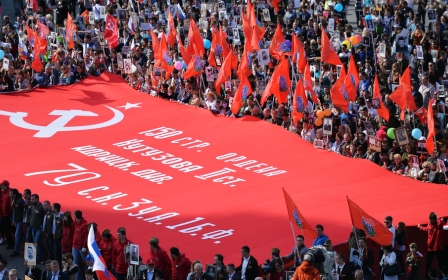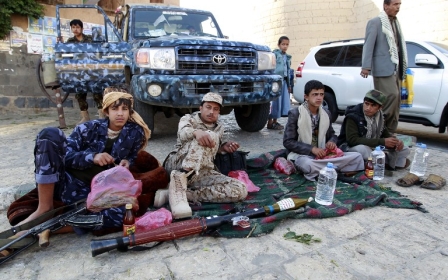IS and the age of brutality

I used to think that the violence pursued by al-Qaeda since the 1990s and more recently by the Islamic State (IS) was nothing more than an extension of the rebellions that took place in Islam in the Seventh Century - the Khawarij rebellions against the Umayyad and Abbasid Caliphates. Only in the last few months have I realised that my interpretation of this phenomenon was lacking, and perhaps entirely wrong.
The bombings in Nairobi and Dar es-Salaam, in the 1990s, the 9/11 attacks in the US, the bombings in London, Casablanca and Madrid, the desecration of human life in Iraq and Syria, the bombings in Ankara on 10 October and in Paris on the 13 November - all this was born out of a distorted vision of the world and of politics. The perpetrators justified their acts with a narrative that bears some sort of relationship to the history of Islam. Yet they only have a flimsy connection to the Khawarij model. This is a genuinely modern phenomenon. It shows a modernist brutality. The ideologues of IS, even in their own psychopathic way of thinking, call the era we are living in the age of brutality.
The Nazi plan aimed at the destruction of Europe's Jews during the Second World War was the first attempt to implement large-scale genocide using the modern mind. The Nazi regime could not have created their industrial scale killing machine, which led to the massacre of millions of Jews, Gypsies, Russians and others, had it not been for unprecedented developments in management, record making, archiving and transferring data. It could not have happened without the availability of a communication system which was swift and could handle high volumes of data. Physics and chemistry allowed the development of mass murder in ways never experienced by humanity before.
Perhaps Nazi circles might not have been able to imagine the process of carrying out the genocide had it not been for the available technologies. Of course, IS is not the Nazi regime. It would pose an enormous danger to world security if IS indeed was one of the most powerful military regimes known in modern world history.
A political phenomenon
But it is difficult to ignore the essentially modernist context within which IS was born, in which its view of the world and its role within it were conceived. This is the era of the rapid transfer of images, of humans and of tools, the age of alienation and loss of human compassion. Data is, as never before, available but so too is surveillance. Indeed control over it has lost all the privileges that once used to be associated with it.
In this age of brutality in which IS lives, there is hardly any distinction drawn between faith and loss of faith, between the values of sacrifice and the absence of any regard for human existence, between adherence to truth and bestial brutality.
Yet, it would be misleading, too, to see the phenomenon of the random killing of innocents that is promoted by IS as being solely a reflection of modernity, of the human conscience turning against itself. IS is also a political phenomenon born out of specific political contexts within specific loci and times.
During the few months that followed the victory of the Tunisian and Egyptian revolutions there was no mention of al-Qaeda at all; its organisation seemed to disappear completely from the Arabic and Islamic scene. The two revolutions pointed to a new method of change and to a new horizon for the people of the Arab-Islamic east, to the potential of these peoples to express their wishes and make the world hear their voices, to regain their right to decide and to will as they wish.
Despite some losses and some violence, the two revolutions embodied the highest levels of popular civilian action. In such a world, al-Qaeda's mindless violence had no place. However, the interplaying ramifications of the first wave of the Arab revolutions soon exposed the region to all sorts of possibilities. The first year of life of the Arab revolution had hardly reached its end before the forces of the counter-revolution had mobilised across the Middle East, drowning the streets and squares of Arab cities in death and destruction.
Iran's sectarian motives
Driven mostly by sectarian motives and partly by geopolitical ones, Iran spearheaded the counter-revolutions in Syria, Iraq and Yemen. Instead of encouraging its two allies in Damascus and Baghdad to meet the demands of their peoples, Iran dedicated its entire armament capabilities and military and intelligence expertise in order to achieve victory for those two minority regimes against the people they rule.
From day one, when children daubed slogans on the wall of their school in Deraa calling for the downfall of the regime, the Syrian regime confronted its people with weapons, with mass murder and with mass detentions. The regime continued to develop the levels of repression all the way to the level of total obliteration of neighbourhoods and towns and to the level of using chemical weapons and haphazard barrel bombs.
From day one in the Syrian people's revolution, and long before a single gun appeared in the hands of the Syrian rebels, and long before the organisation of any al-Qaeda or IS groups, Iran, and its main tool in the neighbourhood – Hezbollah - stood on the side of the regime. As soon as it seemed that the regime had lost its military capabilities and that its armed forces were likely to bring about its downfall, Iran and its allies intervened directly to fight on behalf of the regime's military machine.
The situation was not too different in Iraq, which also witnessed a popular movement in 2011 demanding reform. Despite the modesty of the demands made by the Iraqi popular protests, Iran stood with all its political might and influence behind the policy adopted by then-prime minister Nour al-Maliki to repress the movement using armed force. As for Yemen, which was truly on its way to a free and democratic system of governance, Iran supported and aided the war the Houthis waged against the Yemenis of all walks and trends.
Arab states support for counter-revolution
In other Arab countries, some Arab states hoisted the banner of the counter-revolution and threw their financial and political might in favour of aborting the movement of change and transition to democracy. In coalition with the businessmen and with the political class of the defunct era, the Arab states, where the counter-revolution was fomented, pushed for a military coup against the democratic march in Egypt.
They tried to achieve the same objective in Tunisia. They also encouraged an explosion in post-revolution Libya so as to drag it deep into civil war. These counter-revolutionary endeavours were not without cost. In Egypt, thousands of democracy supporters and activists were killed during the few months that followed the coup. The repression and murder machine is still running and it is still being used to confront the opponents of the coup regime.
In Libya, the coup perpetrators did not hesitate to inflict total destruction upon some cities, including Benghazi, and upon the lives of millions of Libyans. In Yemen, it is true that the Arab intervention has succeeded in limiting the influence of Iran and its allies over Yemen. However, the war is still ongoing and the human and material cost is yet to be calculated.
Iran and the Arab states of the counter-revolution have wreaked havoc, death and destruction everywhere and without any hesitation. They have fought, and continue to fight, with unprecedented brutality on the side of minority regimes. By doing so, they have given way to those who are no less brutal. The period of disregard and absence imposed upon the people's movement during the early months of the Arab revolution allowed for the rise once again of these counter-revolutionary groups and their primitive violence and savage practices.
France may opt for similar reactions to those adopted by the US in the aftermath of the 9/11 attacks. It may declare, foolishly, a war on terrorism in which right is confused with wrong and truth with falsehood, and by doing so it may, as a result of the confrontation with IS, attempt to act outside its natural security sphere. Such an option will place the French, just as it did the Americans, in total confrontation with a huge segment of Arabs and Muslims around the world, and will severely undermine millions of French Muslim citizens and threaten the stability of French society.
Undoubtedly, such a policy would only feed the IS worldview. What France and other major Western countries need to see is the context that led to the birth and rise of IS, and to the disastrous collaboration with counter-revolutionary forces in the Middle East. At the same time, by deserting the people and ignoring their desire for change, these policies created the climate of death and destruction and brought about the brutal age of IS.
- Basheer Nafi is a senior research fellow at Al Jazeera Centre for Studies.
The views expressed in this article belong to the author and do not necessarily reflect the editorial policy of Middle East Eye.
Photo: Syrians inspects a damaged building after a reported government air attack on residential areas in Ayn Terma town, in the eastern Gouta region of Damascus, Syria on 20 November, 2015 (AA).
New MEE newsletter: Jerusalem Dispatch
Sign up to get the latest insights and analysis on Israel-Palestine, alongside Turkey Unpacked and other MEE newsletters
Middle East Eye delivers independent and unrivalled coverage and analysis of the Middle East, North Africa and beyond. To learn more about republishing this content and the associated fees, please fill out this form. More about MEE can be found here.





